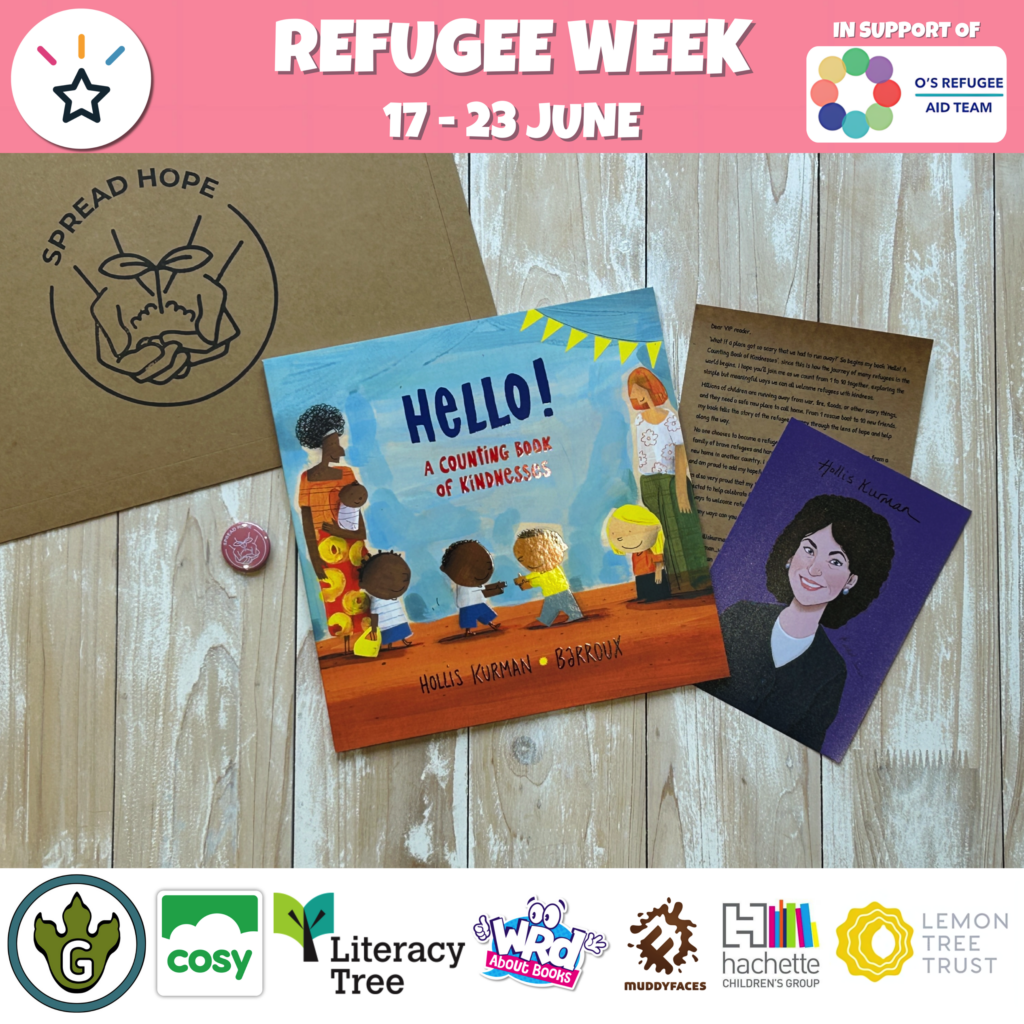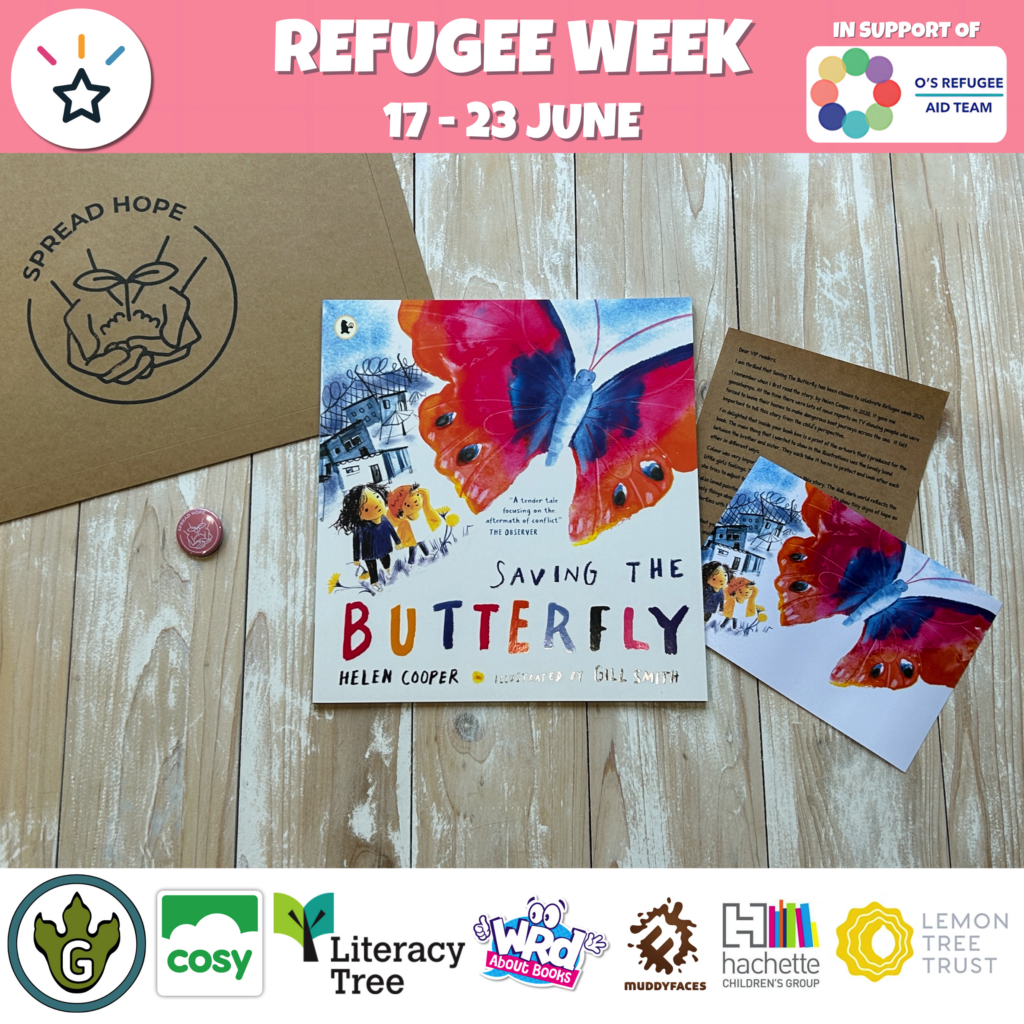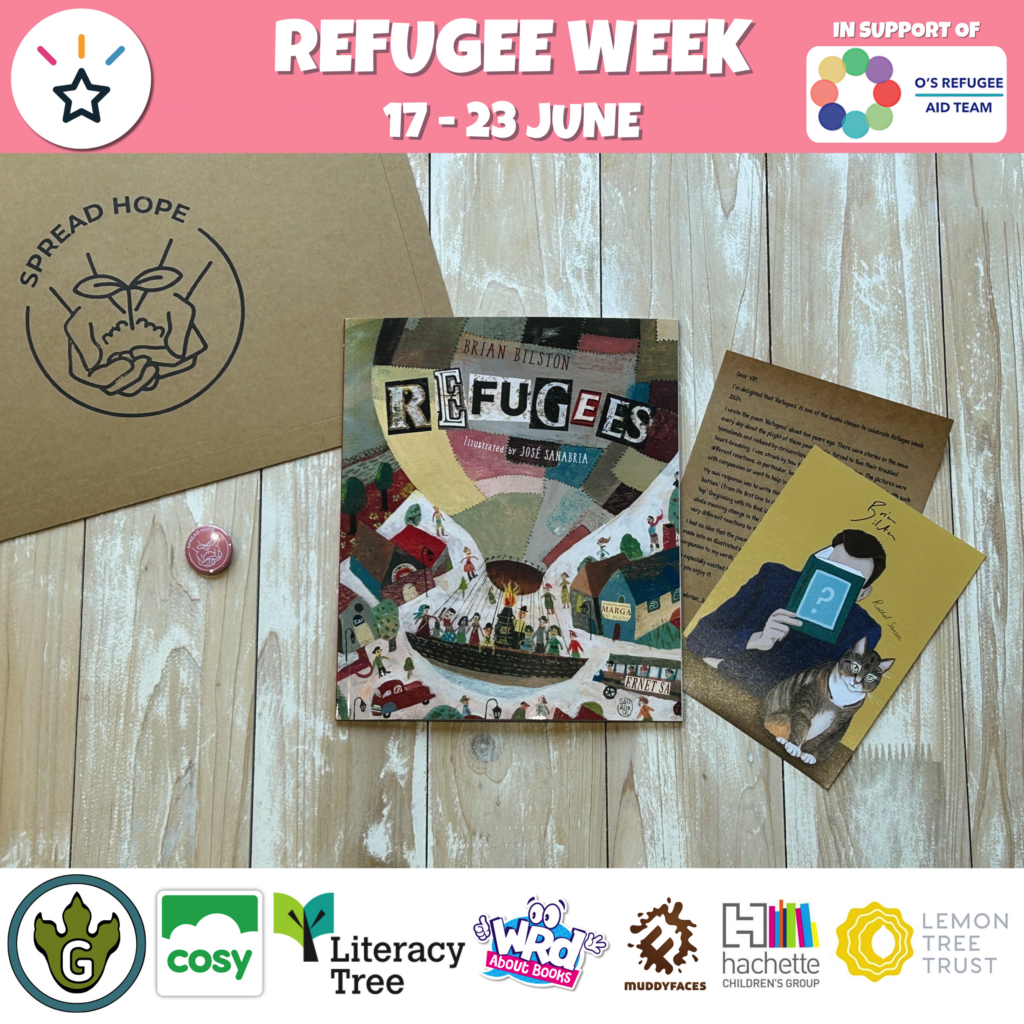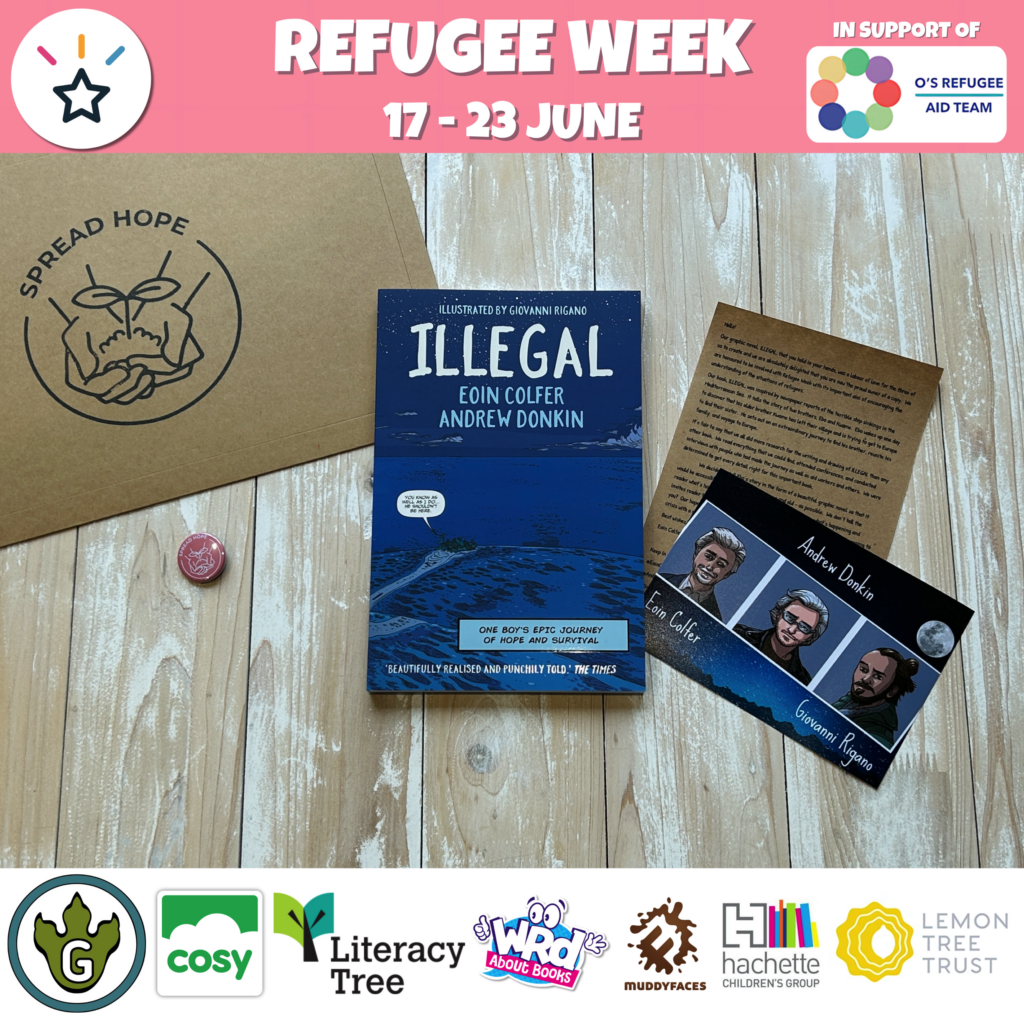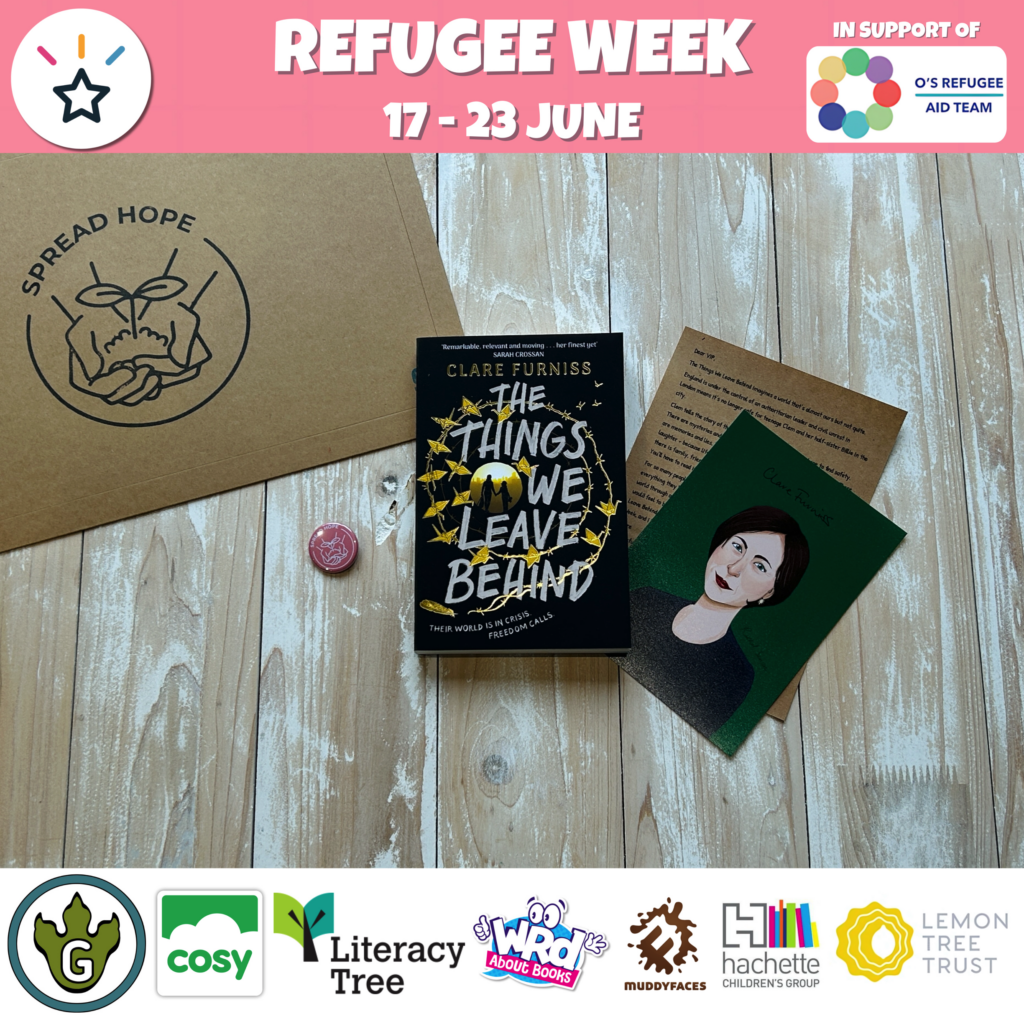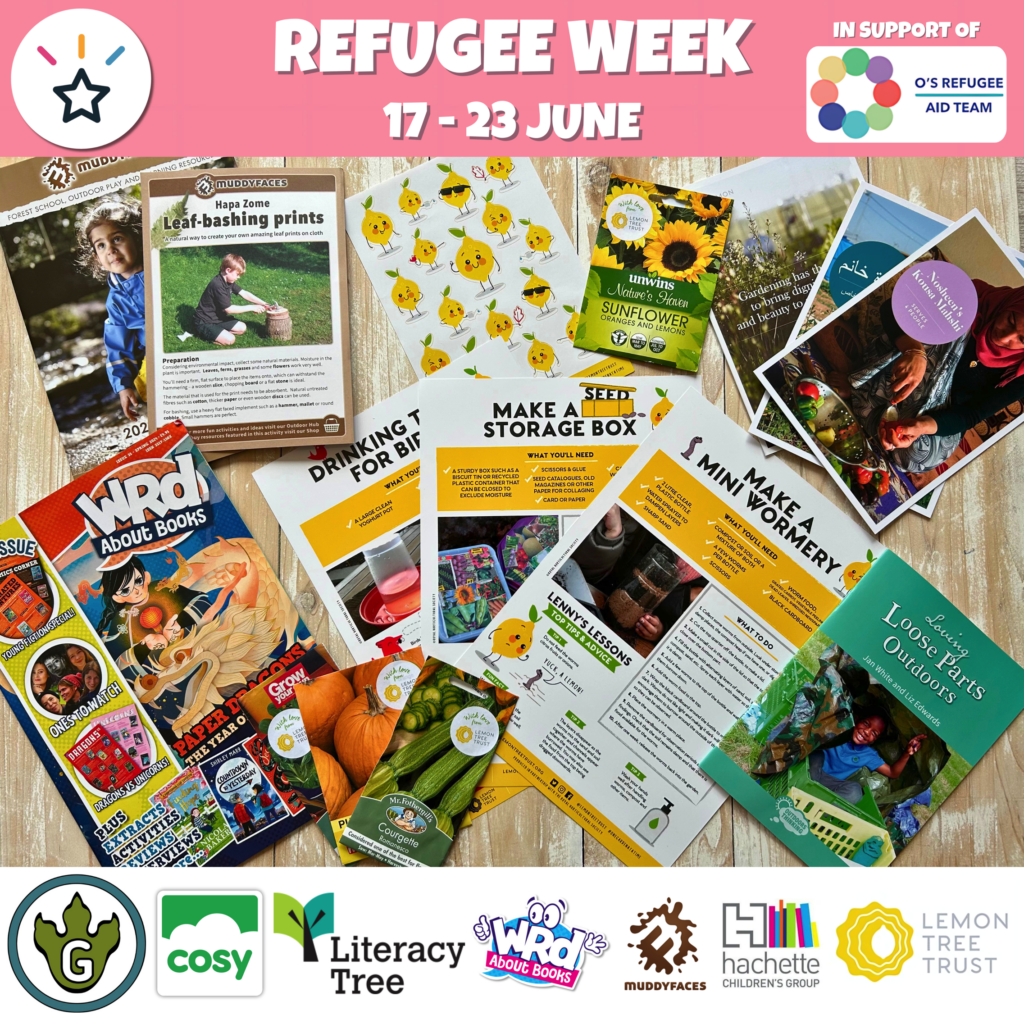Your cart is currently empty!
Refugee Week Revealed (17 – 23rd June 2024)
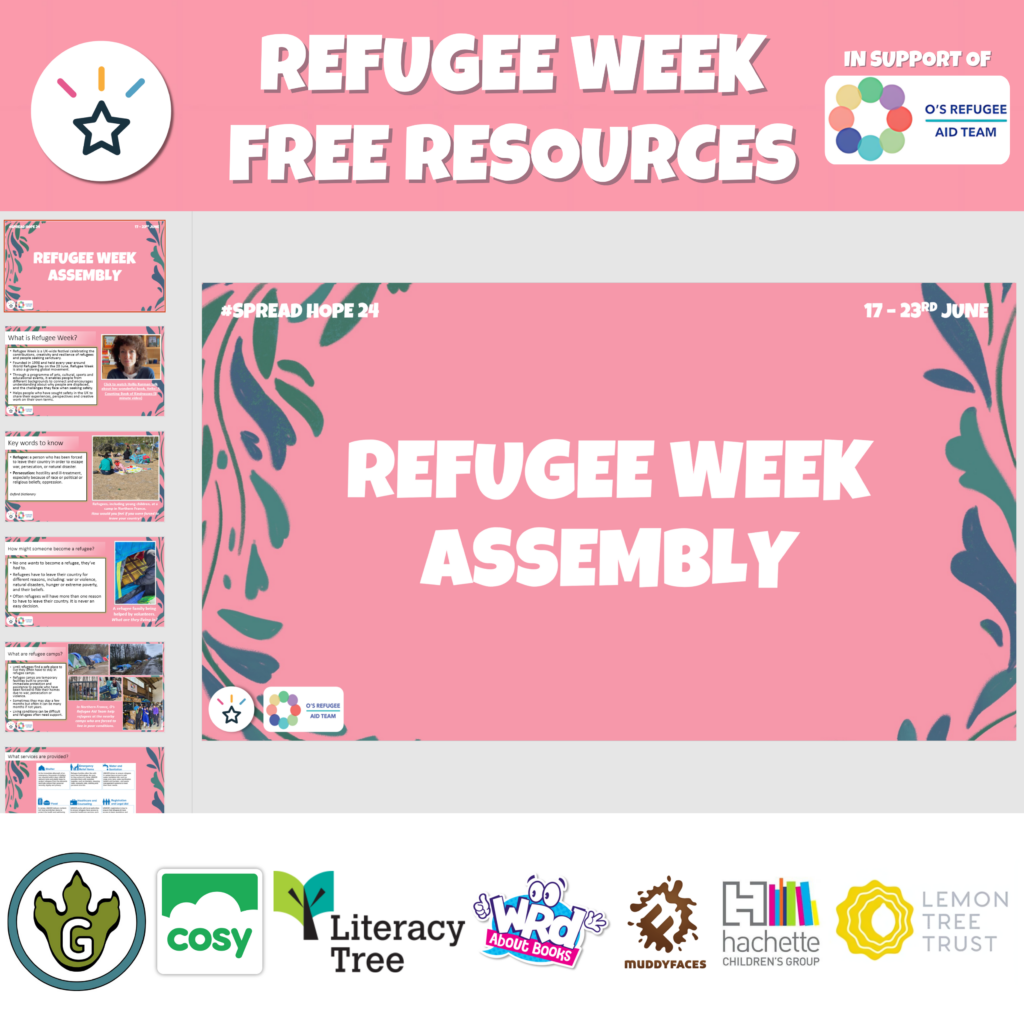
NEW: Teaching activities now ready to download!
🌱 What is #SpreadHope24? 🌱
For the third year, VIP Reading and O’s Refugee Aid Team (ORAT) are collaborating to bring Refugee Week 2024 to life. We believe our hashtag ‘Spread Hope 24’ recognises the difficulties faced by refuges in the world today. Inspiring children to engage with this theme is key. Our aim is to inspire new discussions, new questions, new insight into the plight of refugees from all walks of life, through a love of reading.
O’s Refugee Aid Team (ORAT) has been delivering emergency aid convoys to refugee aid frontline teams across northern France since 2015.
Launched and headed by VIP Reading patron and award-winning author, Onjali Raúf, the team work to raise awareness, funds and crucial supplies for partnered organisations aiding refugees in flight across northern France, Greece and beyond, whilst lobbying governments against the dismantling of humanitarian laws.
From tents to sleeping bags, shoes to fresh foods, medical supplies to toys, ORAT works in close partnership with the Mobile Refugee Support, Refugee Women’s Centre, Play Project and Refugee Biryani and Bananas (of Greece and Poland) teams, to strengthen and unite aid efforts on the ground, with the aid of its own Director of French Operations, Caroline Cottet.
VIP Reading is proud to have supported ORAT in its works of the past, and to dedicate a portion of all profits from our Refugee Week 2022 & 2023 sales to enabling refugees from all walks of life access the help, relief and aid they so desperately need.
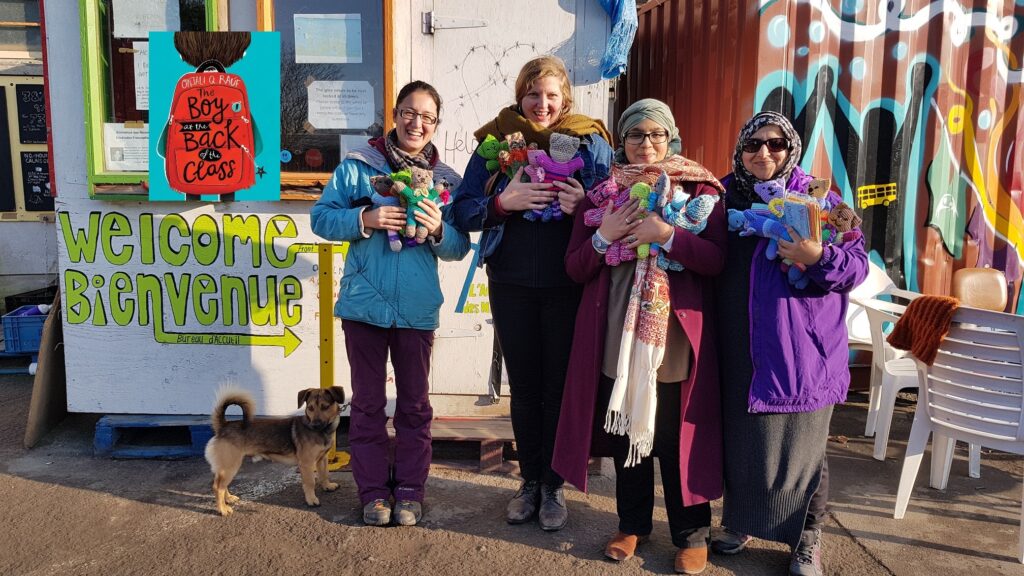
🌟 What will be in each Refugee Week VIP book box? 🌟
This year, there are 5 options to choose from and all boxes will include:
- A stunning title linked to refugees
- 7×5″ print (artwork)
- Letter from the author
- Educational activities
- WRD Magazine
- Lemon Tree Trust goodies: activities, recipe card, stickers and packs of seeds
- Spread Hope badge
- Love Hearts
- And more…
🌟 Why buy a book box? 🌟
For just £14.95 (inc. postage) you get a limited edition book box packed full of educational resources designed to engage pupils and raise awareness of the refugee crisis. You also get lots of extras goodies from our fantastic sponsors.
🌟 What’s in the Refugee Week VIP book boxes? 🌟
Hello! A Counting Book of Kindnesses: Come with a family as they travel out of danger to a safe place and meet all kinds of people who show them kindness along the way. This unique and beautiful counting book is full of empathy and hope for all children, everywhere.
Saving the Butterfly: A poetic, powerful story about a little brother and a big sister finding a new home and new hope after being rescued from a boat lost in the dark sea. A little brother and his big sister try their best to settle in a new home, where they have nothing left from before except each other. The little one makes new friends and quickly learns to laugh again but his sister remains haunted by the shadows of their past and hides away in their broken house. Trying to help his sister, the little one catches a butterfly for her and brings it inside the house. His sister knows that she needs to set the butterfly free … but that would mean going outside. In taking the first steps to face her fears and save the butterfly, she also begins the process of saving herself.
Refugees: Refugees is a book of two voices. The first one sees the people fleeing from war and persecution and asks, Why here? Why my country? It is a feeling many people share. It is one of fear and suspicion. But when you read the text the opposite way, a new voice emerges. It says, ‘Why not make them welcome? Why not share the things we have?’ The world is undergoing a period of mass human migration. Whether this is caused by war, persecution or economics, the people we see on the news in those camps are waiting – waiting to live their lives. There are two sides to every debate. There are two sides to a wall. This story shows both sides of the issue with skill and the illustrations depict the issue in a magic realism style, powerful but never frightening, and will promote a deeper discussion on this topic with an older child.
Illegal: This is a powerful and timely story about one boy’s epic journey across Africa to Europe, a graphic novel for all children with glorious colour artwork throughout. From Eoin Colfer, previously Irish Children’s Laureate, and the team behind his bestselling Artemis Fowl graphic novels. Ebo: alone. His sister left months ago. Now his brother has disappeared too, and Ebo knows it can only be to make the hazardous journey to Europe. Ebo’s epic journey takes him across the Sahara Desert to the dangerous streets of Tripoli, and finally out to the merciless sea. But with every step he holds on to his hope for a new life, and a reunion with his sister.
The Things We Leave Behind: How I Live Now meets Exodus – a startling YA dystopia that imagines London as the epicentre of the refugee crisis, from critically acclaimed author Clare Furniss. Civil unrest in London has reached an all-time high after years of a growing authoritarian regime, and it’s no longer safe for Clem and her half-sister Billie in the city. Clem tells of their treacherous journey to Scotland, by road and then by sea, fleeing with nothing but a notebook filled with stories and memories of home. But is there something Clem’s not saying? And how will this journey – and the sisters’ story – end? With the start of a new life? Or a mirror held up to the past?
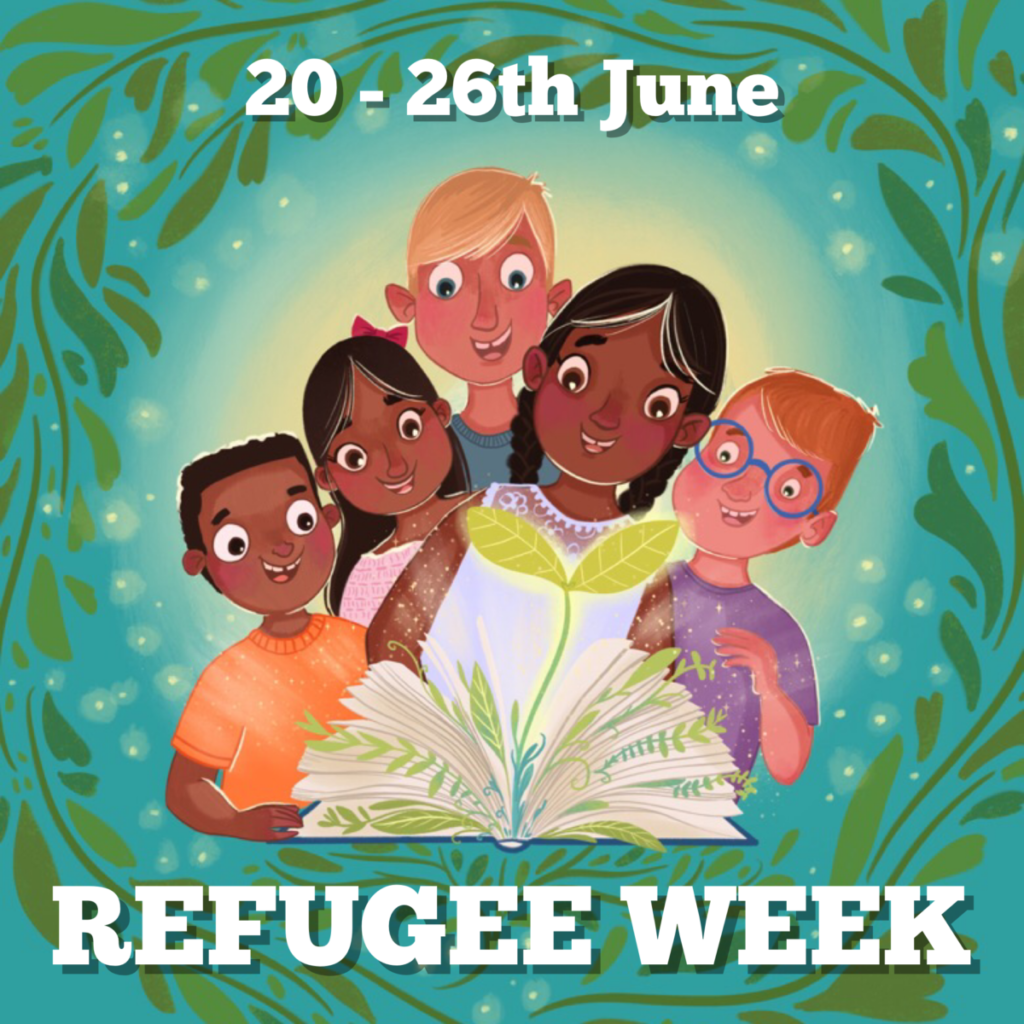
Refugee Week 2024
This Refugee Week 2024 (17th – 23rd June), we are proud to be supporting O’s Refugee Aid Team through our #SpreadHope24 campaign. 50% of the profits from each sale will go to supporting the vital frontline work they carry out.
